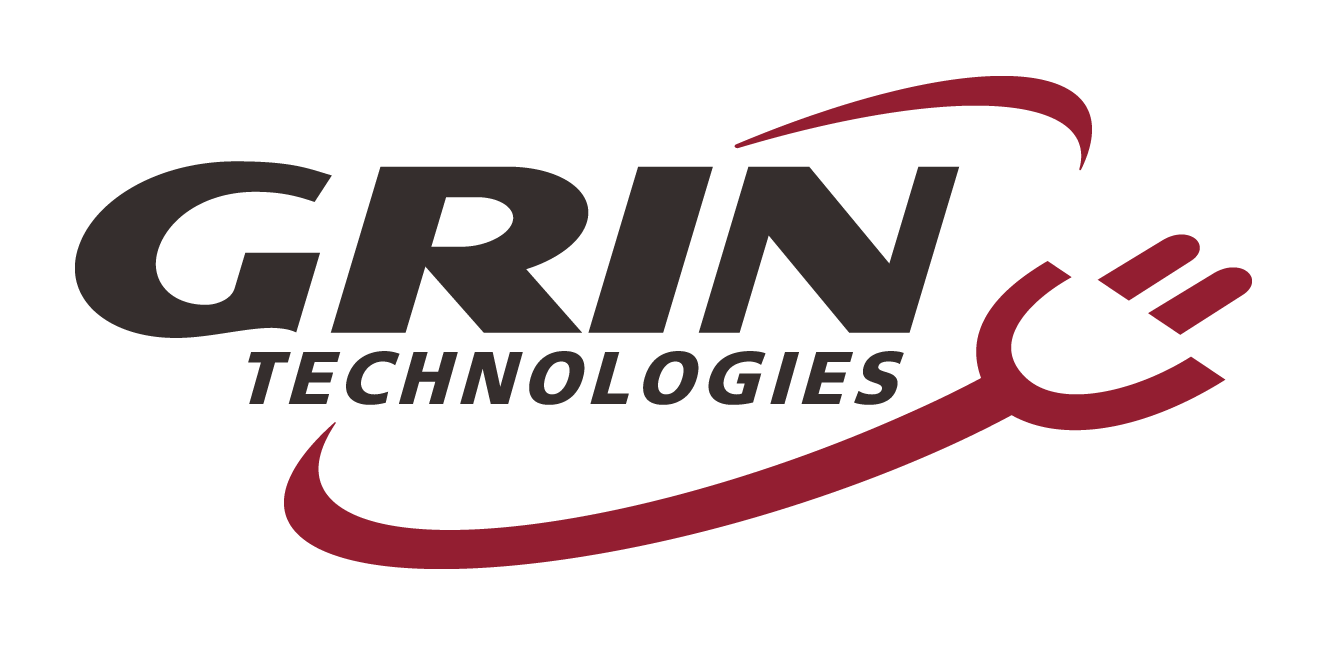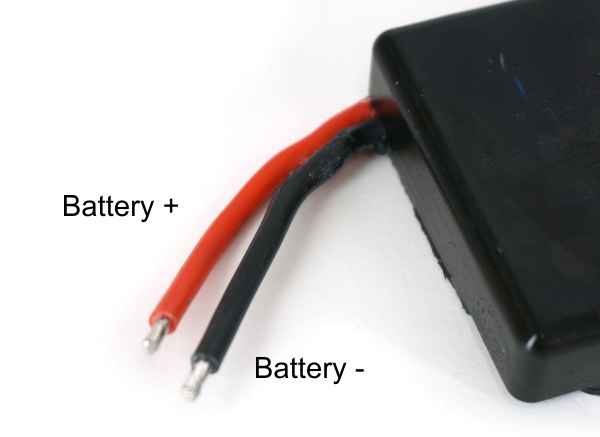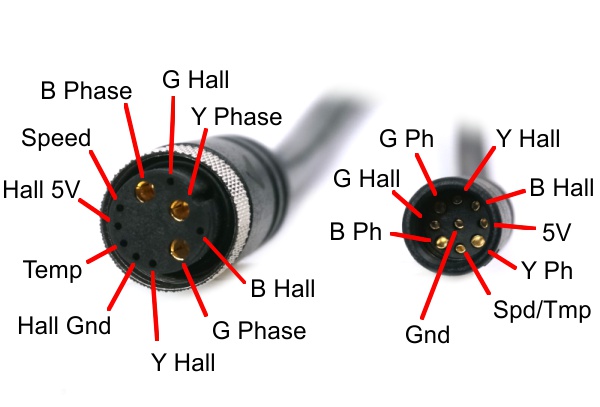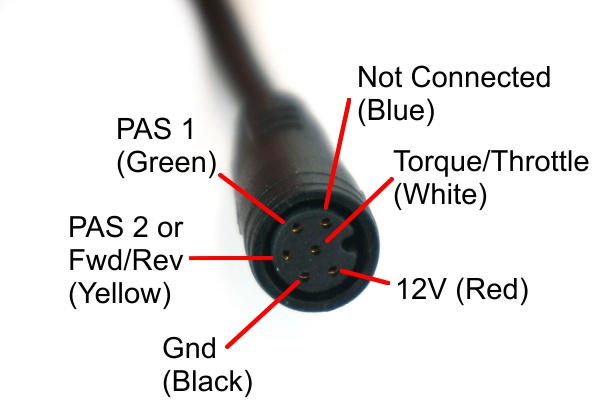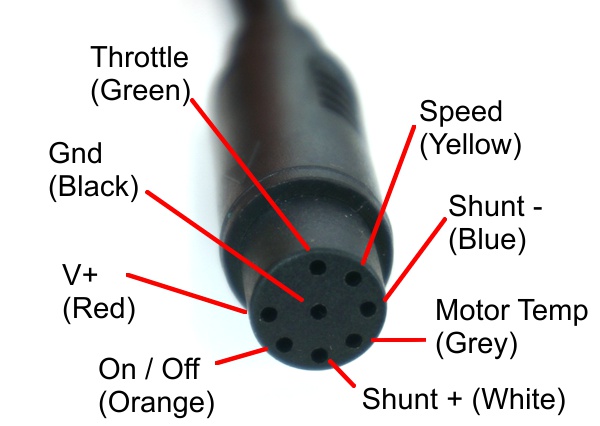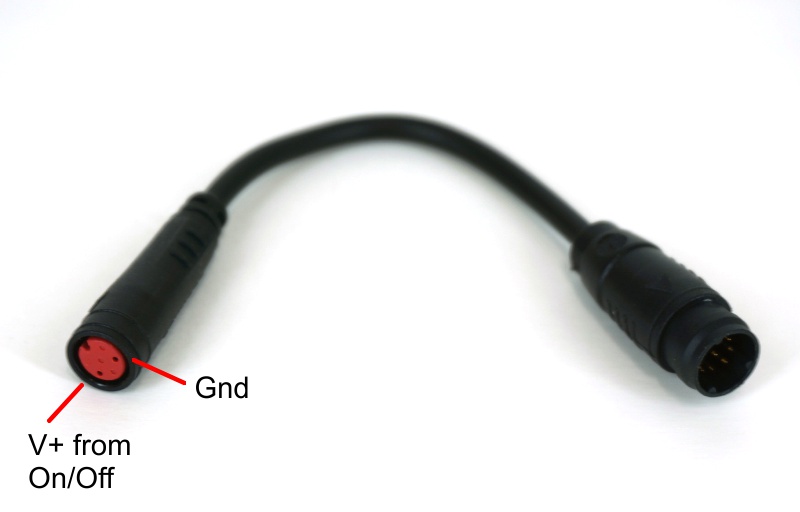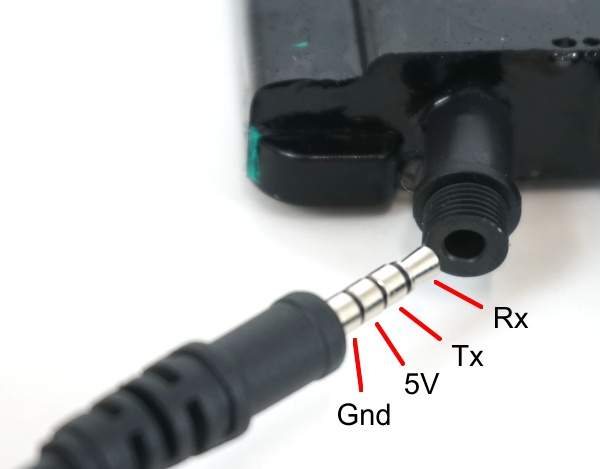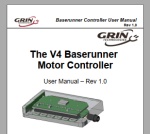🇨🇦 Baserunner

Introduction
The Baserunner is a compact field oriented motor controller (FOC) designed to fit inside the baseplate cavity of popular Hailong and Reention downtube battery packs. It has the same functionality and feature set of our popular Phaserunner motor controller, but in a smaller / flatter profile. This makes it ideal for ebike systems that can benefit from the discreteness of a controller hidden inside the battery mount.

Unlike the Phaserunner which works with up to 72V nominal batteries, the Baserunner has a maximum upper voltage 60V which restricts it to 52V nominal batteries or lower, and it has correspondingly lower current limits due to the smaller size. We have two models in production. The baserunner_Z9 model uses standard mosfets with the Z910 motor plug and has a maximum peak phase current of 55A, making it perfect for small 250-500 watt nominal hub motors. The slightly longer L10 model uses performance mosfets and can support 80A peak phase currents, making it an ideal option for medium to high power motors.

| Baserunner_Z9 | Baserunner_L10 | Phaserunner | |
| Max Voltage | 60 V | 60 V | 90 V |
| Max Phase Amps | 55 A | 80 A | 96 A |
| Continuous Phase Amps | 30-35A | 45-50A | 50-55A |
| Motor Connector Type | Z910 | L1019 | MT60 or L1019 |
Features
- Slim Profile fits in popular battery cradles, or fits discretely with other mount options
- New in V4 Model, all Waterproof plugs for CA3, PAS Sensor, and OEM Cables
- Ability to decode Combined Speed / Temperature signals in motor cable
- Proportional Regen available through throttle signal or stand alone wire
- Works both Sensored and Sensorless, and even with very high eRPMs
- Waterproof, 100% potted electronics
- Fully Programmable parameters (regen voltage, max phase and battery currents etc.)
- Field Weakening allows you to run motors faster than normal back-emf limit
- Embedded LED with comprehensive flash codes for troubleshooting
- Virtual Electronic Freewheeling for removing drag of regen capable hub motors
- Broad Operating Voltage range from 20V to 60V (14S Li-Ion, 24s LiFe)
- Automatic Thermal Rollback prevents mosfet damage from controller overheating
Baserunner Connector Standards
Here is the plug standard for our Version 4 and 5 Baserunner devices
|
|
Battery The controller itself has a short pair of + and – power leads which would be terminated to match the plugs on the battery pack. Depending on your battery these may be flat spade connectors with 4 or 5 contacts, or round bullet terminals for power and small round pins for signals. Reention downtube batteries usually use a flat 4-pin terminal, while quite a number of plug types exist for the Hailong casings. If the baserunner is purchased with a battery pack we will install the mating terminals, while if it is purchased by itself then the user would be expected to solder the wire to the terminal already present in their existing battery cradle. |
|
|
Motor The motor cable is 38 cm long and is terminated with either the Z910 HiGo style 9 pin waterproof plug or the L1019 10 pin plug. These connectors include the 3 phase wires, 5 hall wires, and one or two additional signal wires for temperature and wheel speed signals the CA3. The cable length is sufficient to reach from the downtube battery mount to the rear hub motor on most bicycle frames, but for front hub motors or extra long frames we have both 60cm and 90cm extension cables available too. |
|
|
6 Pin PAS / Torque A 6 Pin HiGo Mini-B or equivalent waterproof plug allows for direct hookup of a PAS or Torque sensor to the motor controller. The pin standard is compatible with the ERider torque sensors, and uses 12V rather than 5V for the power supply. This cable is not used or required when PAS or torque assist is handle via a Cycle Analyst, but it is used whith Superharness kits that have the pedal sensor plugged in directly to the motor controller. |
|
|
8 Pin Cycle Analyst (WP8) The Baserunner is supplied with the waterproof 8 pin HiGo plug (WP8) for running the device under the control of a V3 Cycle Analyst. If the application requires connection to an older CA-DP plug, a WP8->JST adapter should be purchased here. |
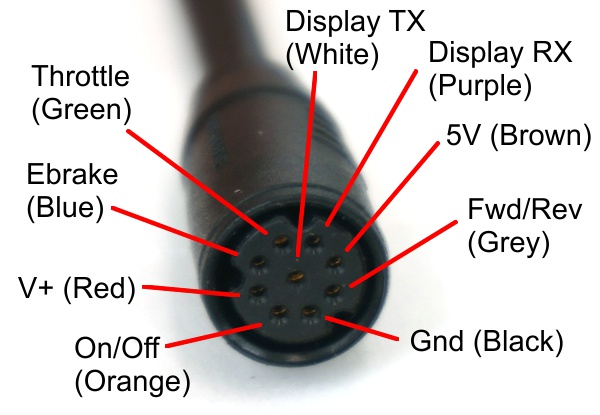 |
Main9 Cable The V4 and later Baserunners also feature a 9 pin waterproof plug that brings out the cables commonly used in ebike wiring topologies with a main signal harness that splits out at the handlebar into throttle, ebrake, 3rd party display, and light connectors. Note that the signal called out as Ebrake (Blue) in this diagram is also mapped as the throttle input on V5 and V6 controllers. |
|
|
DC Power Tap (V4 Units Only) For our customers using the V4 baserunners with a V3 Cycle Analyst, we also included by default a short power adapter from the Main plug to a 2 pin HiGo plug. This adapter not only gives a convenient power source for a rear bike light, it also shorts the regen and throttle signals together so that the CA3 can have full control over regenerative braking features . This adapter plug was discontinued with the V5 and V6 hardware which do not require regen and throttle signals to be shorted. |
|
|
Programming The back of the Baserunner includes a TRRS jack for connecting the Baserunner controller to a computer or USB-OTG capable smartphone using USB->TTL serial cable. This is the same cable used with the Cycle Analyst and Satiator charger, so if you already have it then great there is no need to purchase a 2nd one. When not in use, the there is a small rubber plug included to seal this hole. |
On the V3 Baserunners, the battery and motor cables are identical, but the signal plugs differ. Instead of PAS and Mains connectors it has a single 3 pin JST throttle plug for direct throttle hookup:
3 Pin Throttle (V3 and Earlier Only) |
The throttle connection on these devices uses the 3-pin JST-SM plug standard allowing you to have a simple throttle controlled system. Under the heathshrink of the throttle plug is a pair of white and yellow wires that can be hooked up to a remote on/off switch. It's possible to separate the blue and green signal wires of the throttle connector if a separate ebrake input is also desired. There is also a forwards/reverse wire that can be optionally wired by you so it may be shorted to ground to enable reverse functionality. |
Additional Cables
There are other accessory cables that may be required when purchasing a Baserunner controller by itself and not as part of a kit from Grin.
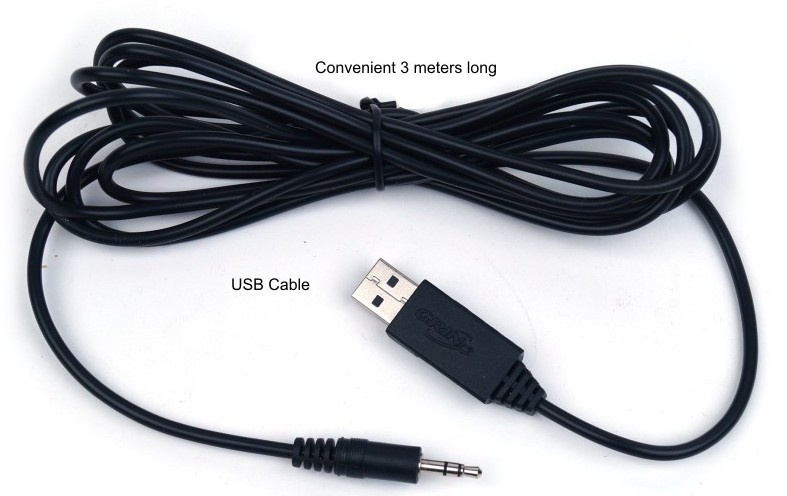 |
USB to TTL Cable: The USB->TTL communication cable is required to connect the Baserunner controller to a computer in order to change and update settings. This is the same FTDI-based serial cable with a TRRS jack we use for the Satiator and Cycle Analyst. |
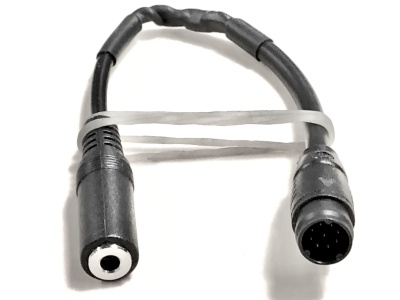 |
9 Pin Main to TRRS: Occasionally people have damaged the main TRRS port on their Baserunner or debris inside the port has rendered it unreliable. This adapter provides an alternative access point to communicate via the Tx and Rx communication lines present on the 9 pin mains plug. |
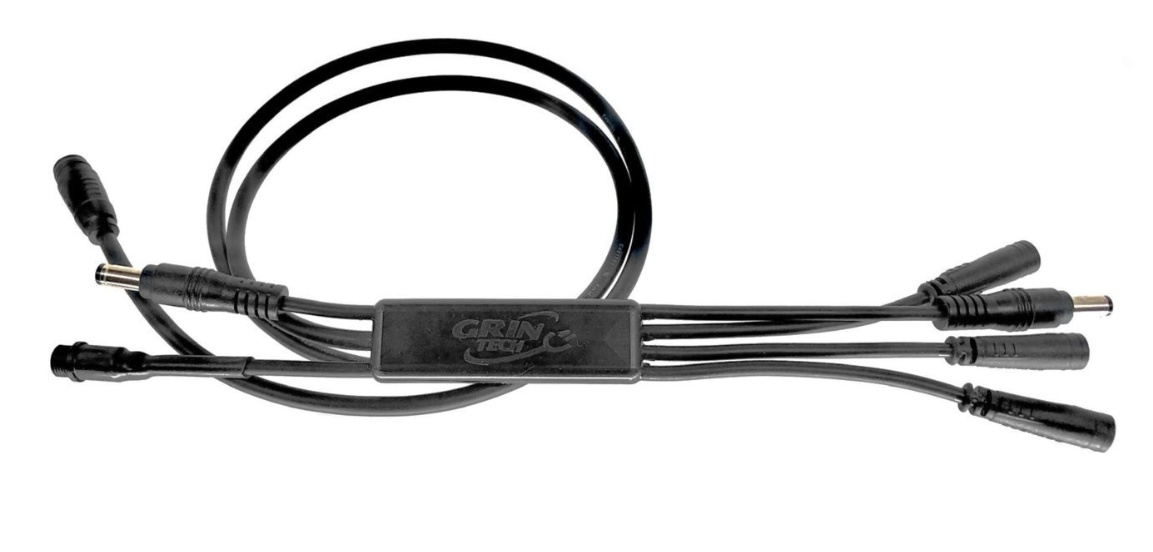 |
9 Pin Superharness: This cable harness connects the Baserunner to conventional colour ebikes displays that use the KM5s communication protocol along with HiGo terminated throttle and ebrake plugs. It has internal circuitry to handle proportional regenerative braking features plus both front and rear light control. |
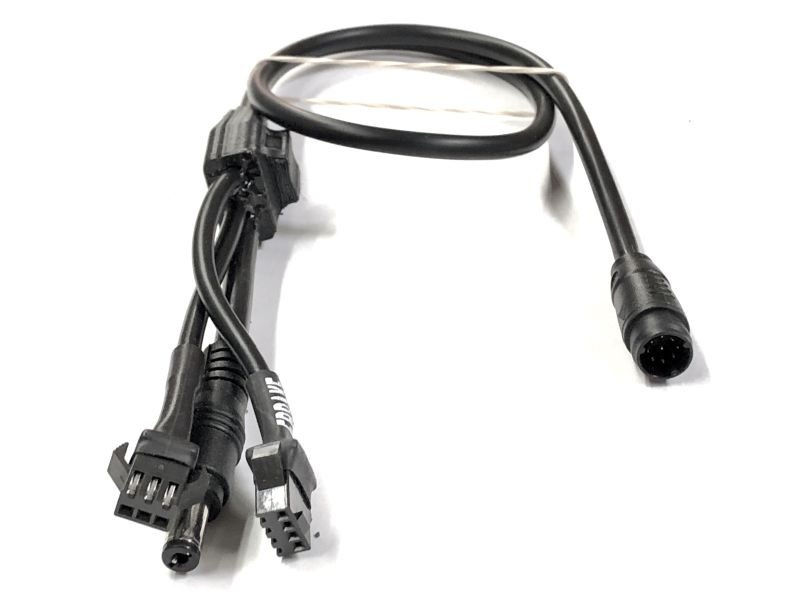 |
9 Pin Basic Mains Cable: This cable harness is required if you are not using a V3 Cycle Analyst or Superharness device with the Baserunner. It provides a 3 pin throttle plug, a 4 pin ebrake plug, and a DC jack for running front lights. As well, it shorts together the on/off switch wires so that the controller is powered on with battery power. |
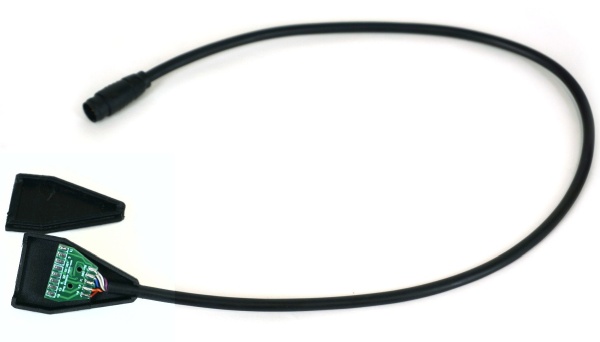 |
9 Pin DIY Mains Cable: For more advanced users, we also provide a bare PCB version of the 9 pin mains cable that allows you to custom solder in place your own throttle, ebrake, on/off switch, fwd/rev switch wires with any connector and cable length of your choosing. Once soldered the PCB should be fully encapsulated in conformal coating or potting resin to waterproof the junction. Please Note: Due to risk of permanent controller damage from errant connections to high voltage pads, the use of the DIY mains cable negates the controller warranty. The 3 year controller warranty only applies to setups controlled with the Cycle Analyst, Superharness, or premade 9 Pin Basic Mains. |
Version History
The baserunner has seen several significant design changes since its first introduction.
V1 Device: The original Baserunner was released in 2017 and was only available with the Z910 connector standard. This model used a 6 pin JST Cycle Analyst plug with the on/off power switch tucked in the throttle heatshrink. Default power state was ON.
V2 Devices:The V2 Baserunners were rolled out in 2019. These units swapped out the 6 pin CA-DP plug for the waterproof 8pin CA-WP connector, which enabled the on/off system power to be controlled by a handlebar switch off the Cycle Analyst, and also provided an option for motor temperature sensing through the CA plug. By default the power switch was OFF. This V2 release included both the Z9 model and also the higher power L10 version.
V3 Device: The V3 update took place in 2020 and had the exact same connector standard as the V2 model, but featured an internal demux circuit to support combined temperature and speed signals in the Z910 motor plug. This demux circuit is backwards compatible and fully supports motors that use the white wire as just a speed sensor or just a temperature sensor too.
V4 Devices: Finally in late 2021 we released the V4 Baserunners with a substantial overhaul. The V4 units continue with the 8 pin CA-WP plug but also have a 9 pin Main signal plug to provide optional support for conventional ebike displays. The independent 3 pin JST throttle plug has been removed, and replaced instead with a 6 pin HiGo connector that can be used for direct hookup of a throttle, a PAS sensor, or a Torque sensor, even without a CA3 device in the system. Due to electronic part shortages, a mosfet substiution was required in the L10 devices made them vulnerable to mosfet failures with 48V and 52V battery packs as a result of voltage spikes caused by electrical ringing. The V4 Baserunner_L10's were therefore only recommended for systems running 36V and lower.
V5 Devices: From June 2022 we had been reworking the V4 baserunners PCBs on hand in order to have better mosfet robustness with 48V and 52V battery packs, and also updating the Cycle Analyst plug wiring so that the throttle output is wired to Analog Input 2 (Brake1) and not Analog Input 1 (Throttle). This eliminated the need to have the 9-2 pin adapter cable for shorting ebrake and throttle pins to achieve regenerative braking control via the Cycle Analyst. Otherwise all wiring and plug details remained identical to the V4 units.
Stand Alone Model
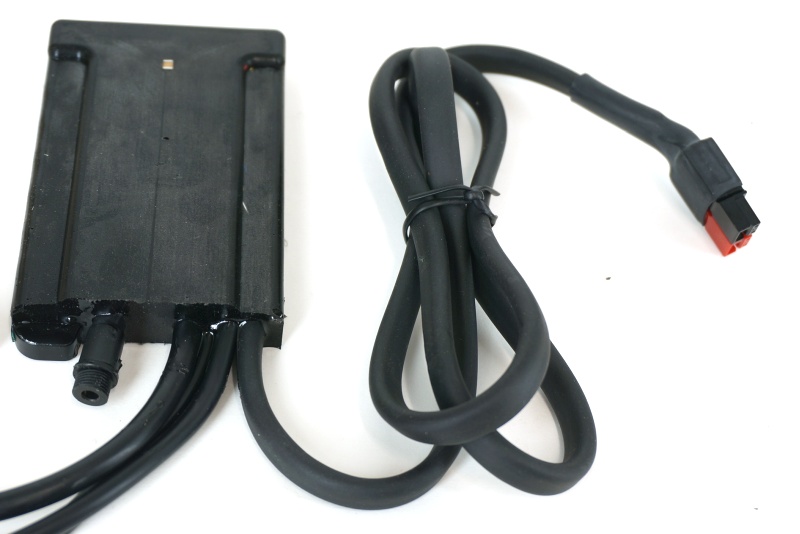
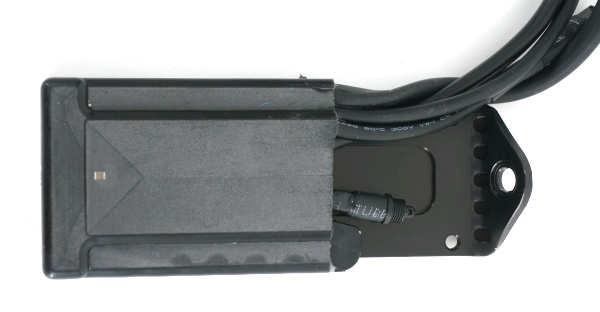 We have also been producing a slight variant of the Baserunner_Z9 controllers that has a 90cm battery cable emerging from the same end of the controller as all the signal cables. This model was developed specifically for our Brompton Bike conversion kits for a nicer cable routing, and can be suitable for other applications where the controller is mounted externally without a downtube battery.
We have also been producing a slight variant of the Baserunner_Z9 controllers that has a 90cm battery cable emerging from the same end of the controller as all the signal cables. This model was developed specifically for our Brompton Bike conversion kits for a nicer cable routing, and can be suitable for other applications where the controller is mounted externally without a downtube battery.
TSM Model

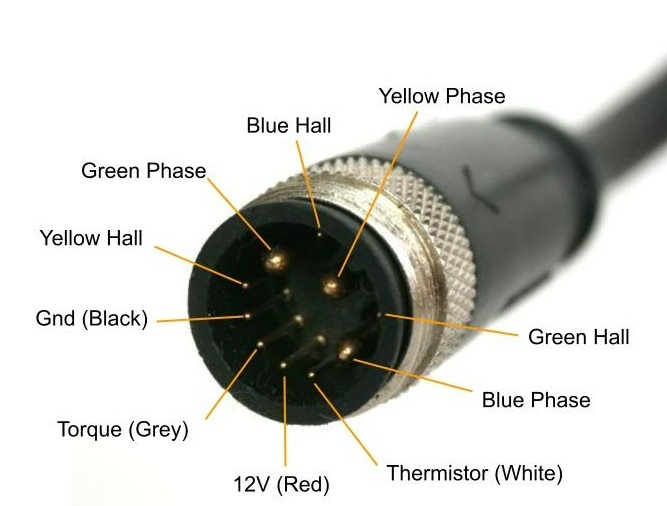 As well, there is a slightly modified version of our Baserunner_L10 that we offer with the Torque Sensing TSM-A5 motor kits. In this controller, the L1019 plug has been rewired to pass the motor torque sensor signal into the controller and then out again on a short 4 pin HiGo plug. This in turn connects to the Cycle Analyst via a HiGo to JST extension cable so that the CA3 device can see the the torque signal coming from the motor.
As well, there is a slightly modified version of our Baserunner_L10 that we offer with the Torque Sensing TSM-A5 motor kits. In this controller, the L1019 plug has been rewired to pass the motor torque sensor signal into the controller and then out again on a short 4 pin HiGo plug. This in turn connects to the Cycle Analyst via a HiGo to JST extension cable so that the CA3 device can see the the torque signal coming from the motor.
Installation
If you purchase the Baserunner from Grin Tech along with one of our downtube battery packs, then it will come pre-installed inside the battery cradle. No installation is required. If you are purchasing the baserunner to add to an existing battery, then the stock aluminum heatsink that came with the battery cradle needs to be removed and replaced with the baserunner assembly. We have cradles available for both Hailong and Reention casings, the two most popular producers of downtube battery enclosures, which are often rebranded with large marine animal names like Shark - Whale - Whale Shark etc.
To determine if you have a suiltable battery model have a look at the photos below. The Reention comes in several sizes and all feature a 4LED battery indicator on the same side as the key switch, but must be of the model with the C at the end which includes a controller mount (not all of them do).
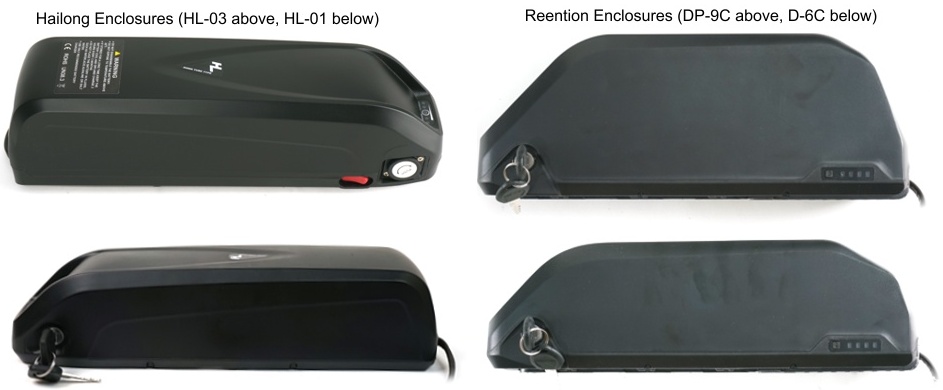
You remove the connector pins from the original plate and move those over to the baserunner, soldering the + and - wires appropriately. On the larger Hailong HL-03 cases, you will also need to drill a hole in the back of the plastic base in order to access the TRRS programming port.

You can also use the Baserunner controller without a downtube battery pack if the form factor is appealing for your application with one of the 3 alternative mounts:
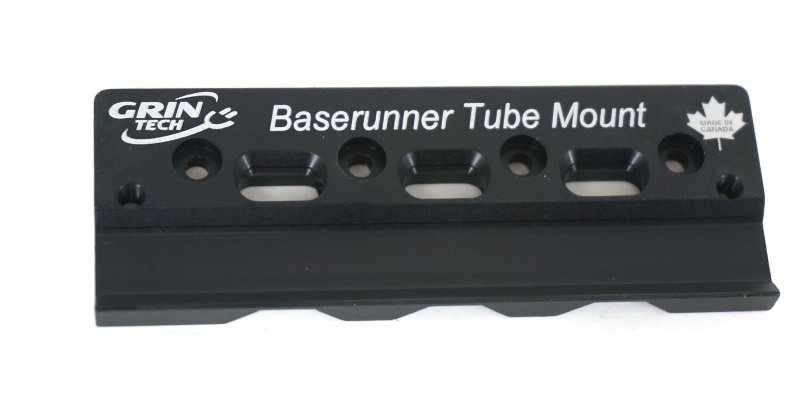 |
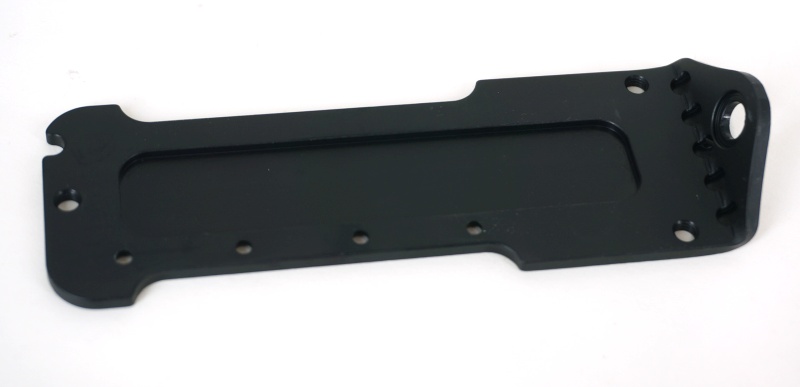 |
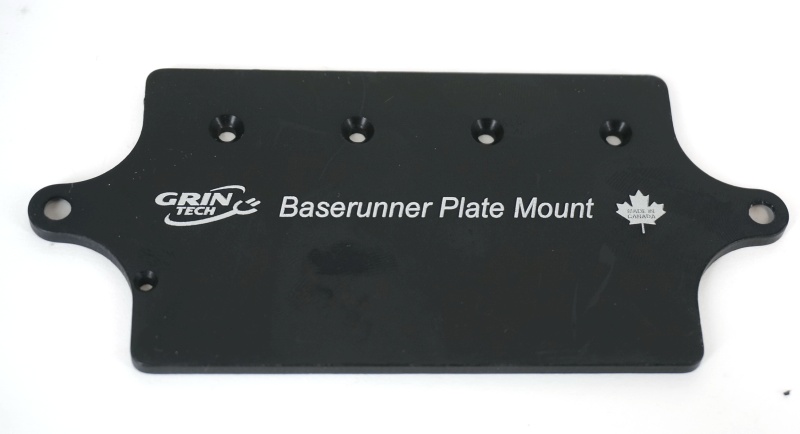 |
| A universal tube mount that makes it possible to zip-tie the Baserunner to any round bicycle tubing. | A fork mounting plate with a bend and hole in it to attach to the fender bolt of Brompton bicycle or other forks, with baserunner sitting just over the fender. | A flat flange mount with screws on either end for bolting the Baserunner to a flat surface, used in our Wheelbarrow kits. |
Software
The Baserunner controller uses the same Phaserunner software suite available for Windows, MacOS, Linux, and Android devices. Note that V4 Baserunner devices require the 1.5 or later software release. The 1.4 and earlier software will produce an unrecognized device error. If using a SuperHarness Kit you MUST use software version 2.0 or later.
Phaserunner Suite V2.0, Windows, Portable
Phaserunner Suite V2.0, Windows, Installer
Phaserunner Suite V2.0, macOS (Requires macOS 10.13 or newer)
There is also a version for Android that is in development, and available for beta testers on the Google Play Store. This requires the use of a USB OTG compatible device, as well as a USB OTG adapter to connect our USB->TTL programming cable to the micro USB or USB-C connector present on most smartphones.
The drivers for the FTDI chipset inside the USB-TTL adapter can be found through FTDI here - https://www.ftdichip.com/Drivers/VCP.htm
User Manuals
The user manual for our V4 Baserunners is available here.
We did not produce a separate manual for the V3 and earlier devices, but the setup, tuning, and wiring details on those were very similar to our Phaserunner motor controllers and the manual for that can be used as a reference.
Videos
CAD Drawings
Right click and select 'save as' to download.
Where to Purchase
The Baserunner controllers can be purchased from Grin directly by themselves, or as part of a full ready-to-roll kit system.


 Canadian
Canadian